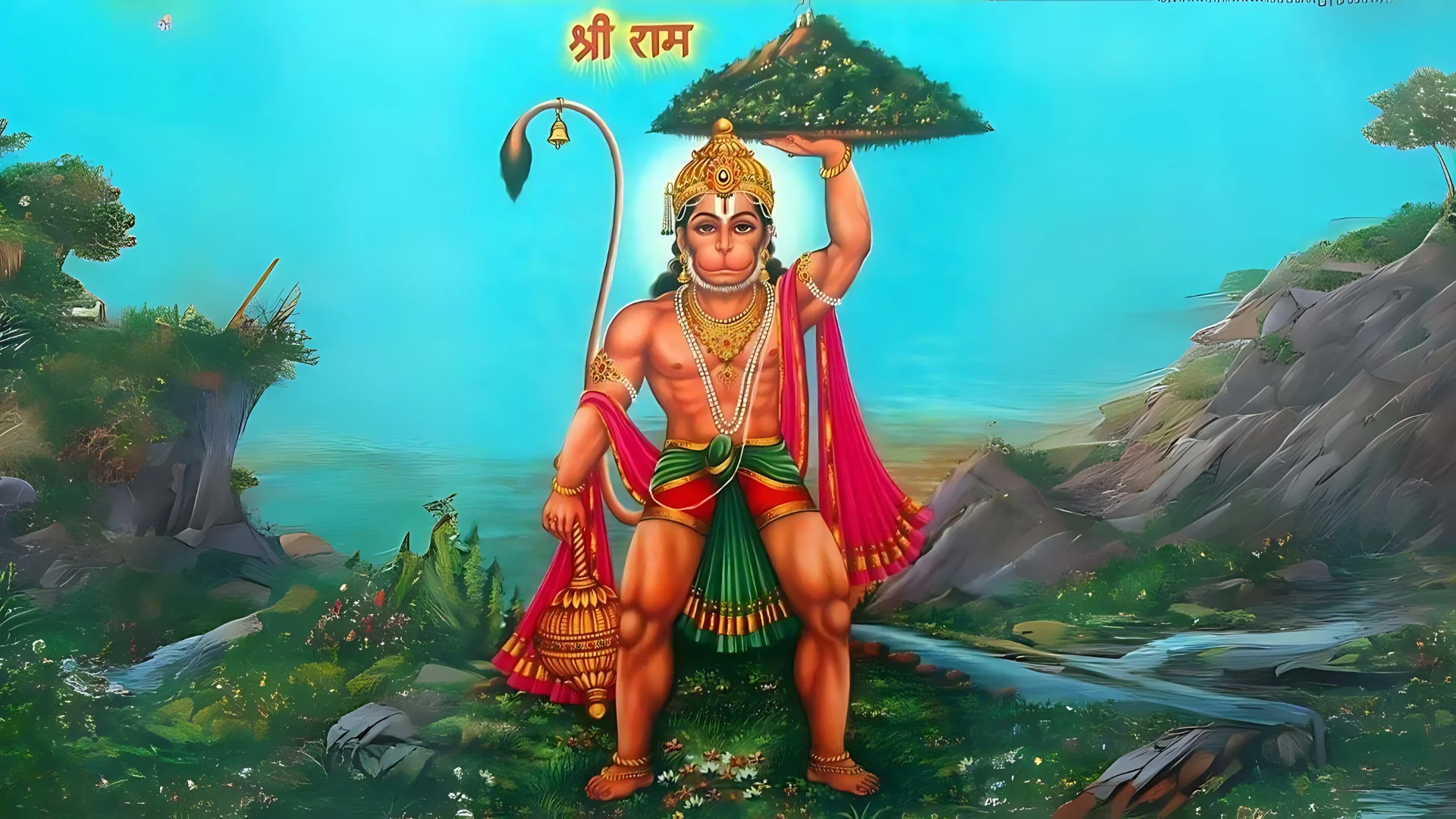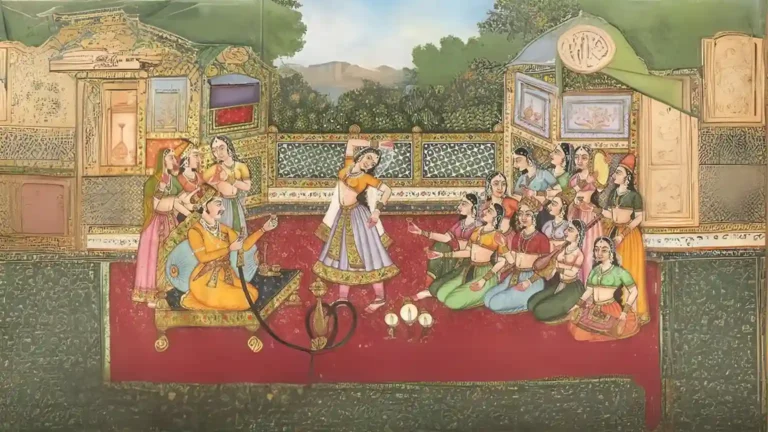Please Like the Blog and Share it for Maximum Reach
Table of Contents
Hanuman Chalisa and Bajrang Baan
The Bajrang Baan and Hanuman Chalisa are spirituous paeans to Lord Hanumanji Maharaj, composed by Goswami Tulsidas. Though they highlight the wondrous feats of Lord Hanumanji Maharaj and his contributions towards Sri Rama, they differ significantly from each other in their objectives.
The Hanuman Chalisa qualifies as the most suitable hymn for everyday recitation by devotees to attain love and protection from the deity. Only tormented individuals should recite the Bajrang Baan, under the guidance of an adept guru.
Differences and Similarities between the Hanumanji’s 2 Hymns
- Introducing Lord Hanuman:
There is a lyrical description of Hanumanji in both the hymns. However, in the Hanuman Chalisa, there is an elaborate description of Hanumanji’s physical appearance which seems absent in the Bajrang Baan. The physical description of Sri Hanumanji Maharaj’s forms the basis of Rupa Dhyana.
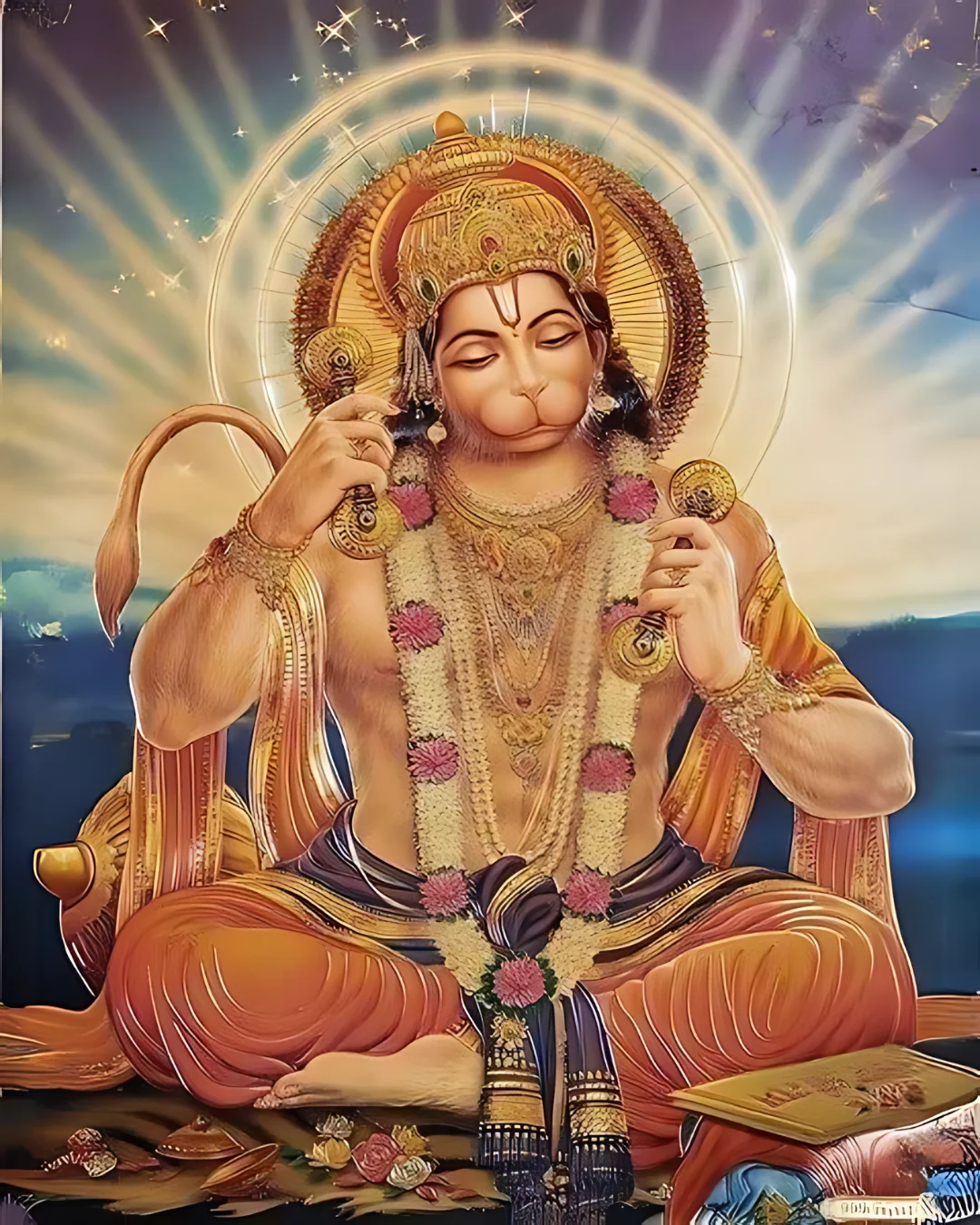
Rupa Dhyana is a powerful practice for mind purification. When the mind dwells on the spiritual form of Lord Hanumanji Maharaj one gradually ascends the spiritual ladder. The imagery of Lord Hanumanji Maharaj becomes clearer on the screen of the mind. Incessantly continuing this practice yields in a purified mind, untainted by Maya.
महाबीर बिक्रम बजरंगी ।
कुमति निवार सुमति के संगी ॥3||
कंचन बरण बिराज सुबेशा ।
कानन कुंडल कुंचित केशा ॥4||
हाथ बज्र औ ध्वजा बिराजै ।
काँधे मूँज जनेऊ साजै ॥5||
mahābīra bikrama bajaraṃgī ।
kumati nivāra sumati ke saṃgī ॥3||
kaṃcana baraṇa birāja subeśā ।
kānana kuṃḍala kuṃcita keśā ॥4||
hātha bajra au dhvajā birājai ।
kām̐dhe mūm̐ja janeū sājai ॥5||
These verses help in picturing the Lord in the mind. The courageous Sri Hanumanji’s body shines like lightning. The Lord dispels darkness and evil thoughts, always remaining in the company of the wise and noble-minded. He is golden-complexioned, embellished with ‘Kundalas’ earrings and curly locks of hair. In one hand, he holds the invincible thunderbolt, and in the other, the Dhwaja ‘flag’. Also, he has a Janeyu (sacred thread) adorning his shoulders.
- Interpreting Hanumanji Lifting the Sanjeevani Mountain:
Both the hymns have mentioned the episode wherein the powerful Lord Hanumanji Maharaj lifts the Sanjeevani mountain. However, the mood and objective behind citing it are different in both compositions.
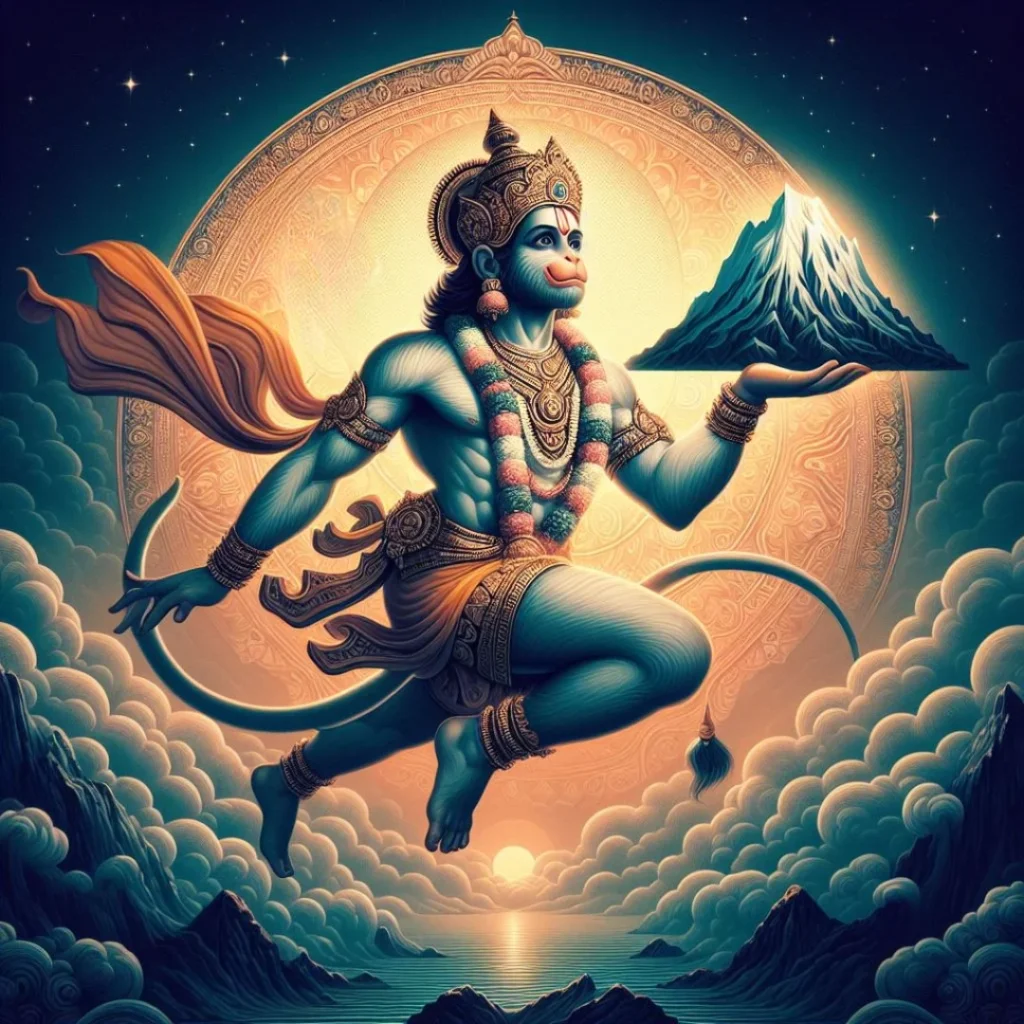
लाय सजीवन लखन जियाये ।
श्री रघुबीर हरषि उर लाये ॥11||
रघुपति कीन्ही बहुत बडाई ।
तुम मम प्रिय भरतहिसम भाई ॥12||
lāya sajīvana lakhana jiyāye ।
śrī raghubīra haraṣi ura lāye ॥11||
raghupati kīnhī bahuta baḍāī ।
tuma mama priya bharatahisama bhāī ॥12||
Lord Hanumanji Maharaj brings the magical Sanjeevani herb which nullifies the effects of the celestial weapon of Indrajith, thus reviving Sri Lakshmana. Sri Rama, brimming with joy, embraces Sri Hanumanji Maharaj and says: “You are as dear to me as my brother Bharatha. ”
अब विलम्ब केहि कारण स्वामी। कृपा करहुं उर अन्तर्यामी॥
जय जय लक्ष्मण प्राण के दाता। आतुर होइ दु:ख करहुं निपाता॥
जय गिरिधर जय जय सुख सागर। सुर समूह समरथ भटनागर॥
O Lord, why are you delaying your arrival? Oh, knower of all hearts, kindly grace me. All glory to the reviver of Sri Rama’s younger brother Lakshmana. I am growing extremely restless. Kindly put an end to all my problems. All glory to the ocean of happiness, the Lord who lifted the mountain (Sanjivani).
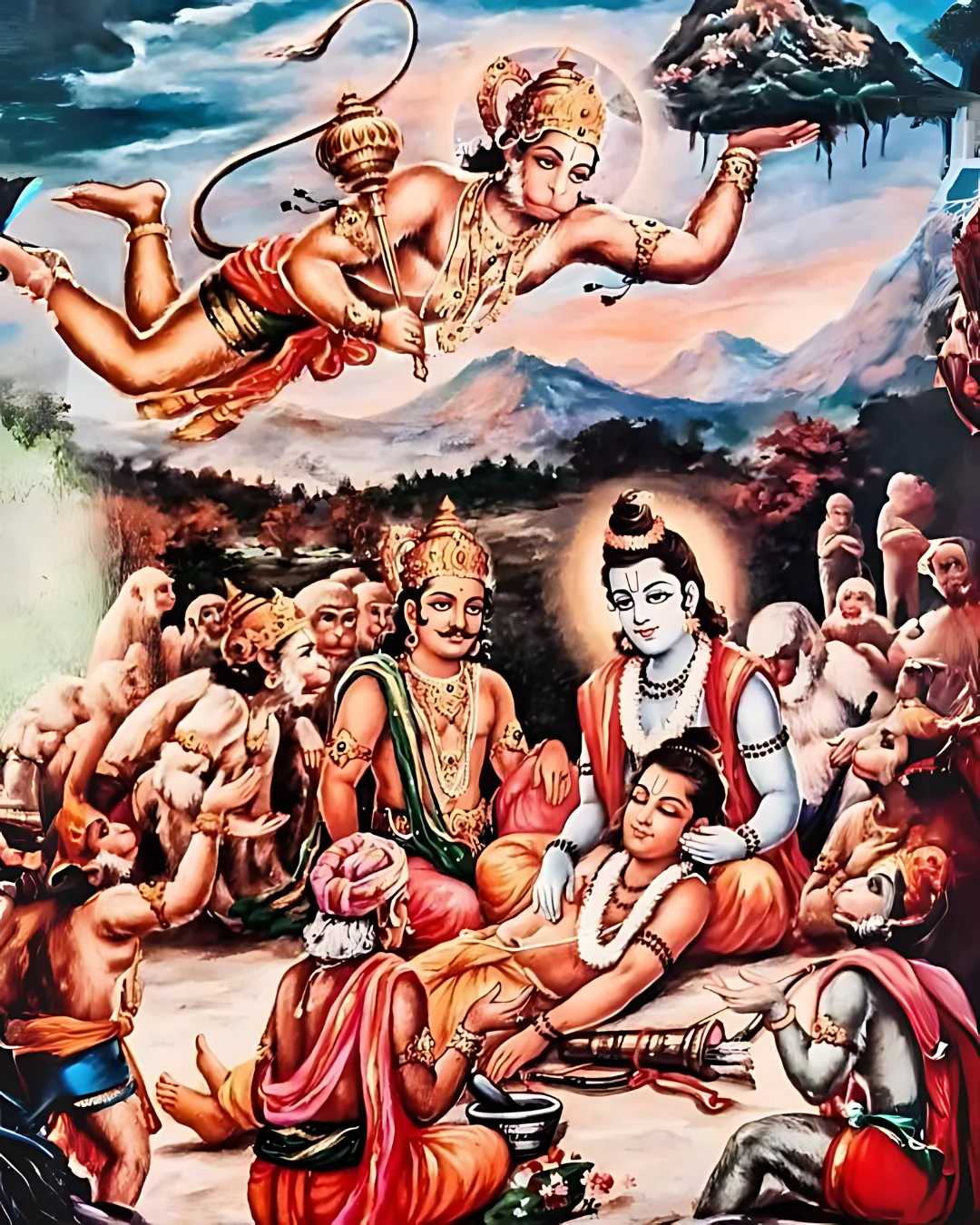
The first is the 11-12th couplet from the Hanuman Chalisa whereas the latter is from Bajrang Baan. Both speak of Sri Hanumanji, but their objectives are extremely different. The advanced Bhaktas who care less about the world shall resonate more with the delightful descriptions of the Chalisa while the Baan caters to an audience that is caught up in the web of Maya.
The Chalisa reveals the heart of Hanumanji, as the eternal servitor of Sri Rama. Mostly throughout Chalisa, Sri Rama becomes the reference while the mood and pastimes of Hanumanji revolve around Him. Though Lord Hanuman Ji achieved the impossible, he always stood with folded palms, awaiting the instruction of Sri Rama. He does not want to miss the smallest opportunity to serve.
This is the mood of Bhakti that a Sadhan Bhakta must attain. Being credited as the reviver of Lord Lakshmana is a matter of great pride, but Hanumanji, apart from all, accepts the humblest of positions. He only craves for the love of Sri Rama. For attaining the unimaginable and bringing joy, Lord Rama blesses Hanumanji with a pedestal equal to that of Sri Bharatha, (who is very dear to Sri Rama). So, the Sanjeevani mountain episode gets the color of Bhakti Rasa in the Hanuman Chalisa.
Moving now to the Baan. Here Tulsidas Ji glorifies the power of Lord Hanuman. Here Lord Hanuman is the central protagonist. Lord Hanumanji Maharaj saves Sri Lakshmana from death. This line intends that individuals should instill unwavering faith in the prowess of Lord Hanuman as He has the potential to even avert death. The gravest of problems appear insignificant to Bajrangbali. When a person successfully invokes Him, Hanumanji floods life with happiness and peace. Thus, the Bajrang Baan focuses more on receiving favors from the Lord owing to His fathomless strength.
- The effects of the 2 Hymns on Bhootas (Ghosts) and Pishachas (Vampires)
Bhootas are spirits of the deceased. In Sanskrit, Bhoota means the past. They carry baggage of their past as memories, suppressed anger, unfulfilled desires and grief. Their path towards liberation gets blocked until their fulfillment of desires.
Only after attaining human birth can one resume on their path towards Moksha. The demotion of Human beings to Bhootas occurs because of unexpected deaths as in accidents, massacres, or deprivation of last rites.
Pretas are ghosts with increased negativity. An individual becomes a preta on account of unsurmountable bad karma. Even after the fruition of desires the individual cannot abandon the preta body. There is no redemption until the preta exhausts all the bad karma by enduring suffering.
Pishachas are the deadliest of all. They are creatures that enjoy suffering and cause havoc in the lives of people they associate with. They are malevolent beings that are said to be the creations of Brahma. Other versions suggest they were offsprings of Krodhavasa and Sage Kashyapa. They live in the court of Kubera and find mention in the great epic Mahabharata. They are negative as they feed on the energies of Human beings and can alter thoughts that can lead to insanity.
The Hanuman Chalisa emphatically states:
भूत पिशाच निकट नहिं आवै ।
महाबीर जब नाम सुनावै ॥
bhūta piśāca nikaṭa nahiṃ āvai ।
mahābīra jaba nāma sunāvai ॥
This literally means that Bhootas and Pishachas can never lurk around an individual who utters the name of Sri Hanumanji.
In line with this the Bajrang Baan says-
भूत प्रेत पिशाच निशाचर। अग्नि बैताल काल मारीमर॥
इन्हें मारु तोहि शपथ राम की। राखु नाथ मरजाद नाम की॥
bhūta preta piśāca niśācara। agni baitāla kāla mārīmara॥
inheṃ māru tohi śapatha rāma kī। rākhu nātha marajāda nāma kī॥
Which means- Kindly destroy Ghosts, Goblins, Evil nocturnal beings, Fire bodied ghouls, etc. In the name of Sri Rama, I urge you to annihilate these lower beings, maintaining the dignity and supremacy of the sacred name.
Both these texts exhort that negative forces/creatures cannot combat with the prowess of Lord Hanuman. Also, the Shiva Purana states that Sri Hanuman Ji Maharaj is an Avatar of Lord Shiva. Ghosts, goblins, and other creatures that symbolize inauspiciousness always surround Lord Shiva.
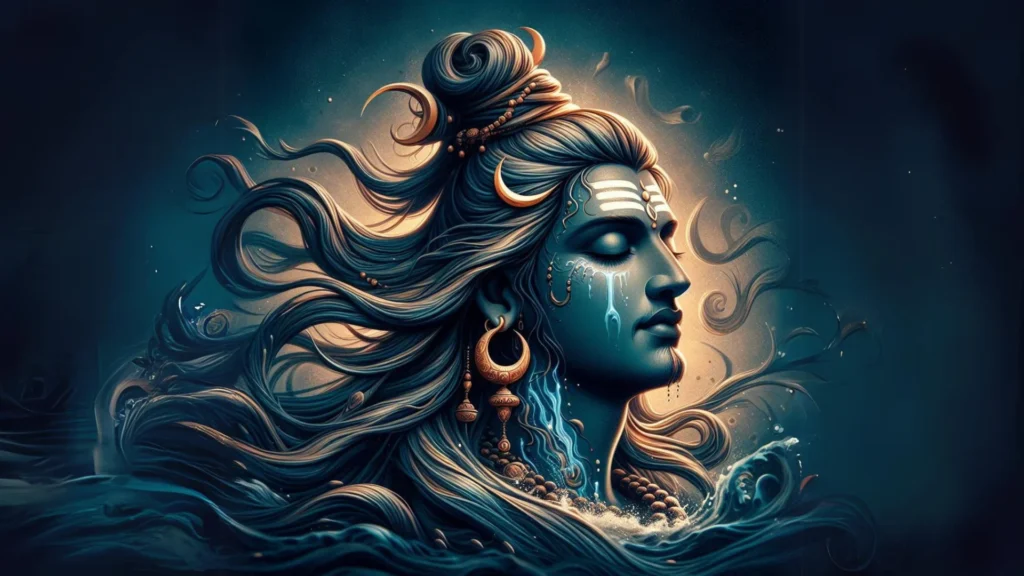
But, the greatness of Bholenath is that He grants them redemption and allows them to remain in proximity with Him. However, when they lurk around human beings, their vibrations unsettle the mind. Thus, Hanuman Ji who is the most accessible Lord on Earth saves one from their malefic effects.
In the Hanuman Chalisa, the glory of His name does it all, while in the Bajrang Baan, the reciter is forcing the Lord to come into action.
In my humble opinion, coercing Hanuman Ji in the name of His Ishta Deva, Sri Ramachandra is not very suitable for Bhaktas. We should rely on the causeless mercy of Hanumanji which flows incessantly for His followers.
7/8 Questions from Sanatana Dharma
The scores generated in this Quiz may or may not be absolute. There may be right or wrong answers to each Question. A percentage towards 100 indicates that you are more aligned to the overall subject matter.
Mehendipur Balaji Maharaj: The Vanquisher of Bhootas and Other Negative Forces
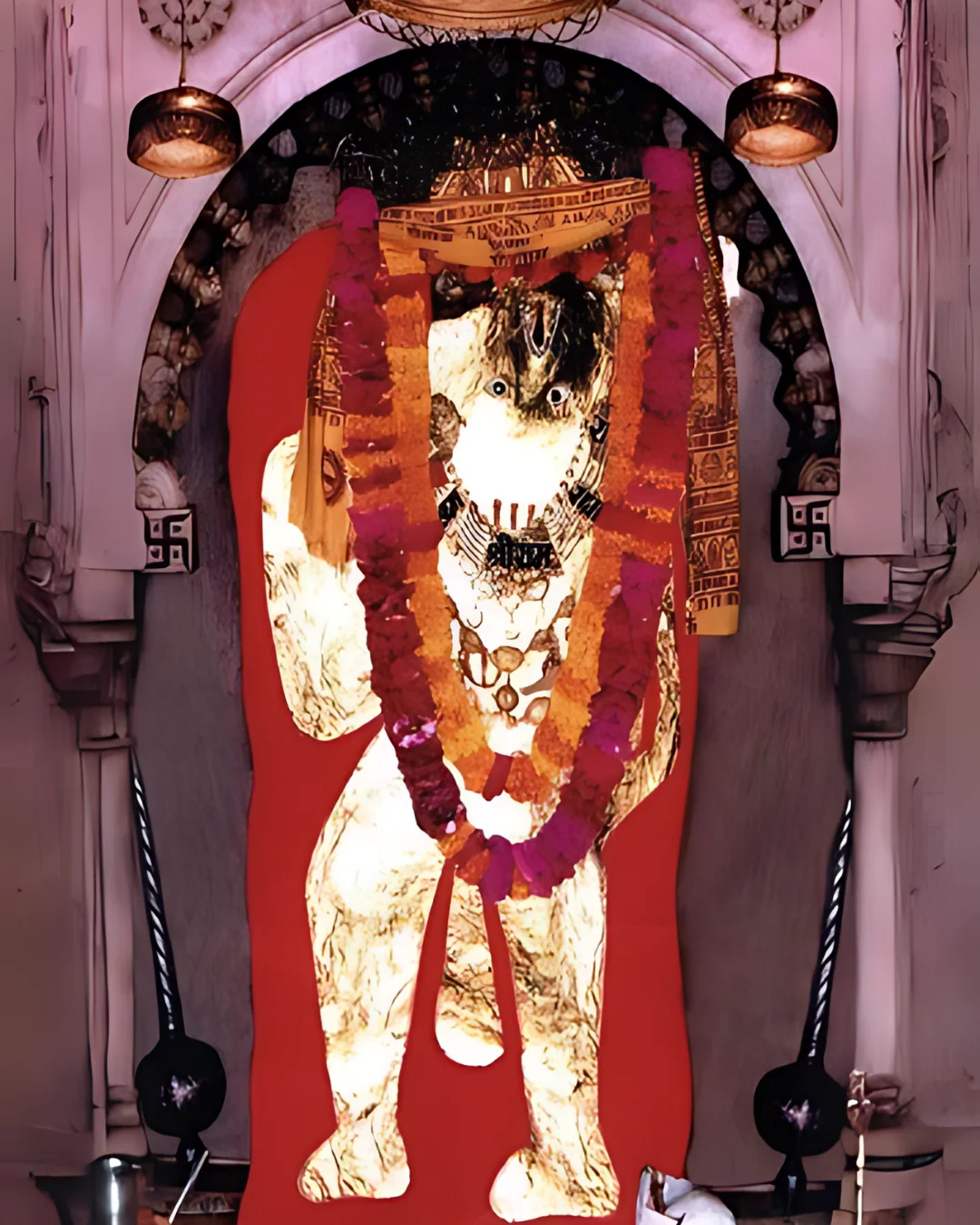
The Mehendipur Balaji temple in the Dausa district witnesses cases of people possessed by vile spirits. The temple has 3 prime deities- Sri Mehendipur Balaji (A form of Lord Hanuman), Sri Pretraj Sarkar (the executioner), and Sri Bhairav Kotwal (Commander of Sri Balaji’s army). All evil spirits that have possessed a person visiting the temple reveal themselves before Shri Balaji Maharaj. Sri j Ji Sarkar delivers justice by punishing the evil souls. Bhairav Kotwal is the Commander and is an incarnation of Lord Shiva. A devotee must leave the temple premises only after seeking His permission.
Which Hymn is More Powerful?
While reciting any hymn, one should note that none is superior or inferior to the other. It is just that the mood of certain hymns is more conducive and likable to certain individuals. All stotrams, Chalisas, and the name of Bhagwan yield the same results. The variety in them is because of the varied mindsets of people who recite them. Some feel more comfortable reciting the Hanuman Chalisa while certain others might prefer reciting the Hari Stotram. Every person feels connected to their Ishta Devata and reciting their hymns shall make them happier and at depth to their Bhakti.
Please Like the Blog and Share it for Maximum Reach

